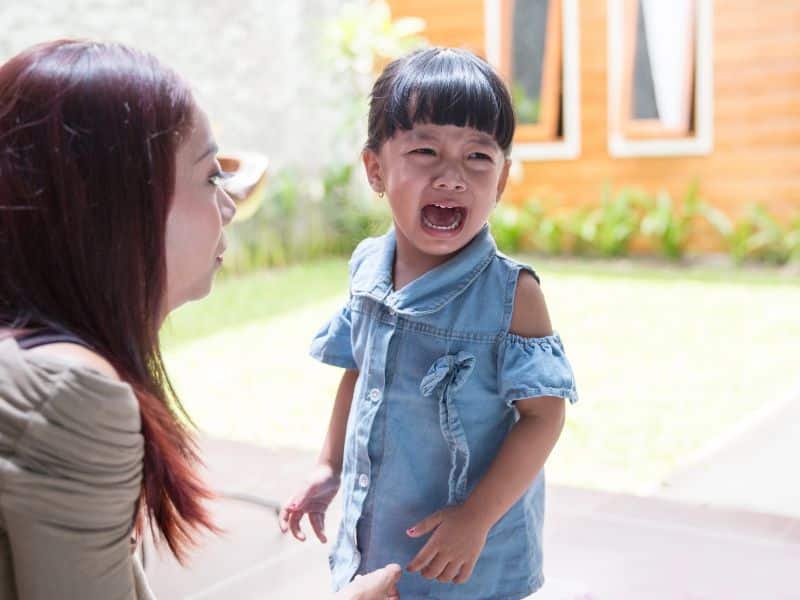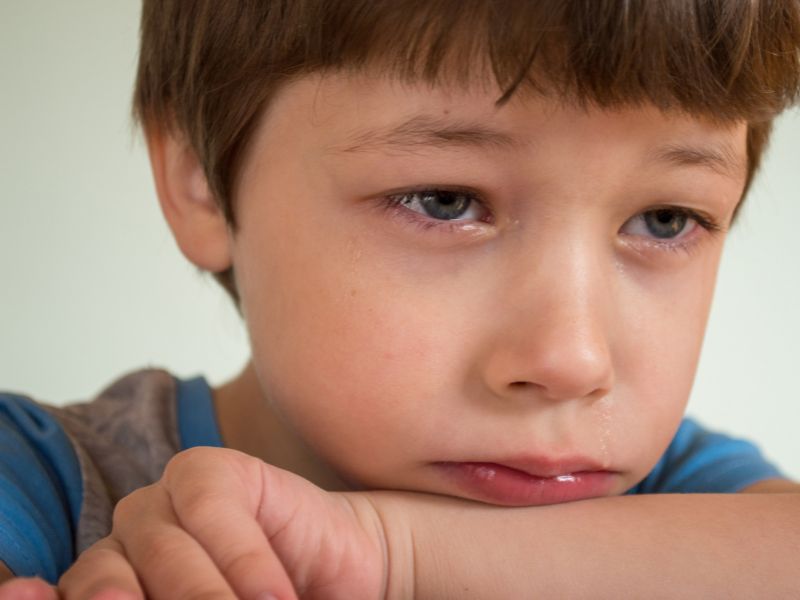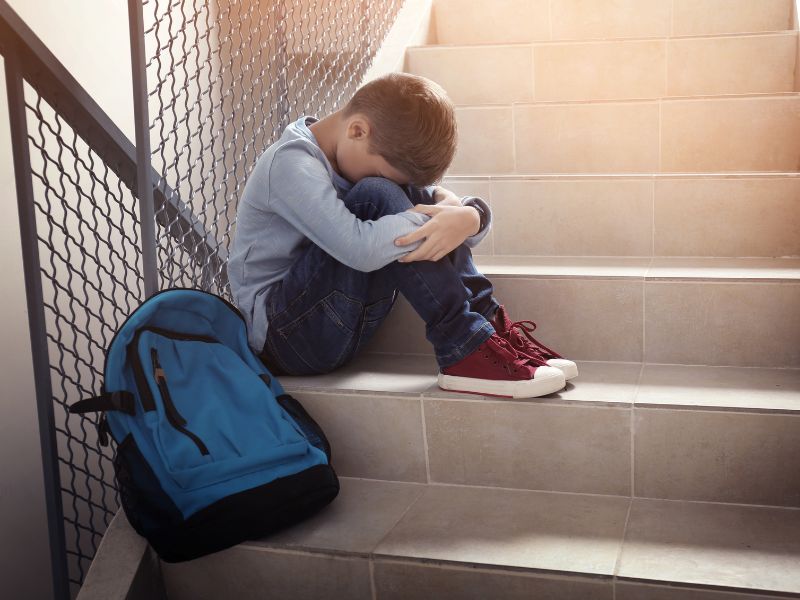SEPARATION ANXIETY IN 5 YEAR OLDS | TIPS TO HELP YOUR CHILD
The first thing to know about separation anxiety in 5 year olds is it’s absolutely normal. We are biologically wired in that way to ensure safety and security at early stages of life where we can’t take care of ourselves. So being attached to parents and being anxious at the company of less familiar people is completely normal for young kids.
But as the children grow up and their awareness of the world around them widens and they get more and more comfortable spending time outside the family at Childcare, kinder or relative’s place. But even at that age, they might need a lot of encouragement, adjustments to blend into a new surrounding.

So in a nutshell, separation anxiety in 5 year olds is a normal part of their development.
It’s the fear and worry that builds when a child is away from their primary caregiver or they fear being left alone.
It’s also not uncommon to feel anxious when transitioning to a new environment, like starting kindergarten or visiting family members for the first time.
This can manifest itself in different ways such as clinginess, crying episodes, and reluctance to leave the home.
All these are normal reactions and can be managed with plenty of love and understanding. Parents should take the time to recognize when their 5 year olds may be feeling more anxious than usual and ensure they have people they can trust around them whenever possible.
Taking positive steps towards emotional support will always help manage separation anxiety in young kids.
Understanding the Symptoms of Separation Anxiety In 5 Year Olds
Separation anxiety in 5 year olds can be difficult to understand and tackle at times.
Fortunately, as a parent you’re not alone. There are many resources available to help identify and treat the symptoms of separation anxiety.
https://raisingchildren.net.au/babies/behaviour/common-concerns/separation-anxiety
Common warning signs may include clingy behaviour, fear of sleeping alone, fear of being separated from parents, or even physical symptoms like stomach aches or headache throughout the day.
Reach out for help if needed and remember that understanding the symptoms of separation anxiety is key to helping your 5 year old grow confidently!
Identifying Possible Causes of Separation Anxiety In 5 Year Olds

Separation anxiety can appear in various forms, such as having difficulty separating from loved ones or feeling overwhelmed with feelings of nervousness and worry when left alone.
Possible causes for these feelings may vary between individuals, but could include factors such as their age (younger children may struggle more with this anxiety), environmental changes or stressors, attachment to a primary caregiver, reactions to school transitions, or underlying health issues.
Nevertheless, recognizing these triggers is the first step to helping your child cope and understand their emotions.
Exploring Strategies for Coping with Separation Anxiety
Undoubtedly separation anxiety can be an incredibly stressful experience for both the child and their loved ones, but there is good news!
There are several strategies you can use to help your 5 year old cope with this difficult emotion. While each situation may be unique, some successful techniques have included role-playing, deep breathing exercises, using a security item such as a stuffed animal or blanket, and creating a visual reminder of a loved one.
You may also want to make sure your child spends plenty of time with other adults and kids since socializing has been shown to reduce feelings of anxiety in some children.
Working together to explore these strategies can not only increase your child’s comfort level but also bring the entire family closer together.

Tips for Making Transitions Easier on 5 Year Olds
Have a Calm Morning Routine
“Mornings” and “calm” don’t often go together when it comes to children and school. But you can plan ahead so that you all can have a great start to your day.
You can get your kids pack their lunch, ready their cloths and bags previous night to avoid the hassle in the morning. Also waking before the kids and getting as many things as possible done, can help you all in so many ways.
Related article 39 ways to say I LOVE YOU to your child in everyday life.
Start talking about what’s about to happen before it happens
Make a plan. Is it the first day of school that has them worried? Start talking about it a week before, including details about how you’ll pick them up again at the end of the day.
When you shop for school supplies, ask their opinion where necessary. Let them pick a nice back pack, lunch box and it will make them feel excited about going Kinder/school. Also ask for their help to prepare their backpacks, pick out an outfit, select their lunch items, all in advance.
Get familiar with school environment
Show them their school environments before they need to go on their own. Take them with you when you are going school tours and help them get an idea how a school classroom looks like and have a chat with their teacher so that it gets bit easier for them on the first day.
Everytime you pass by the prospective school/ kinder, show excitement and show them their future school. Talk about the children playing outside, help them see it as a fun and happy place for kids.
Create a goodbye routine and stick to it
It can be as simple as a good bye kiss and a hug and bye right after. Or a quick reminder how much you love them or that you will be coming back. My favourite good bye routine with my daughter is a quick I- love-you hug and then asking her if she knew who is coming to pick her that day, mommy or daddy? That's my way of signalling her "enjoy the day and we are coming for you at the end of the day"
Whatever routine you decide on, the most important thing is to leave when it’s done, and not get baited into staying longer, or doing the routine again, or giving one last hug. Set the expectation that goodbye means goodbye … until you see them after school.
Keep your calm
DO your best to appear calm and in control of your own emotions. Even if your heart is burning inside.
It's not easy leaving your little one behind when they are crying for you. Infact, it's one of the most overwhelming moments I've had in the recent past.
But as grown ups we must try our best to put on a brave face and show your child that everything is under control. Hiding emotions from kids isn’t always a best practice, but remember, this is about helping them feel secure without you. They don’t want to leave you while you’re crying any more than you want to leave them.
Keepsake
Let them pack in their bag a little something from home which will comfort them and reassure them that they are not alone. What you may pack depends on the personality of your child. It can be their favourite soft toy, a book or a photo.
What helped my daughter was a small family photo attached to a ribbon and made into a cute little necklace around her neck. She loved it and as the teacher told me later she had been going around the class showing and introducing her family to teachers and friends.
Little something from home is always comforting to them and it works like magic.
Trust is key
DON’T sneak out when they’re not looking. I know the temptation is there; “he’s not crying now and his back is turned and if I just slip out now we can avoid tears.” Seems logical enough.
Until you remember that this is about building long-term resilience, and not about short-term avoidance. Once they figure out you’ve snuck out on them, they’ll go into the next day with less trust and more fear.
It's a team work
Building up children's confidence and trust to make them actually love their school environment requires a lot more than parents' assistance.
Talk to staff members in their school and discuss what you all can do at school and outside school to help them build up a positive relationships within school environment. Having friends and staff they can look up to can make children feel safe and secure in the school.
Some simple steps like a star from the teacher, a hug, word of appreciation and empathy can go a long way in help young children overcome their anxiety.
Conculsion
Separating from us can be difficult for children even if it’s for couple of hours, especially when they are transitioning to a new space with less or no familiar faces. This is known as separation anxiety, which is a normal development for young children.
To create a calm and inviting atmosphere for your child when you part ways, try to remember that it can be just as upsetting for you as it is for them! A warm hug, encouraging words, a favourite soft toy, are some of the things that can help a child feel calm and safe when separating from you.
The simple yet effective tips mentioned in my article will definitely help your little one enjoy their time away from you to the fullest without being anxious or worried.

Leave a Reply